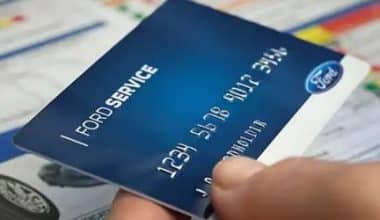Transferring balances from one credit card to another with a lower APR can help you save money on interest. In other words, credit card balance transfer can be a useful tool for paying off high-interest debt.
Hence, a balance transfer is the transfer of a credit card or loan balance to another credit card. If this sounds like something of interest to you, then this article is for you.
Besides learning what it is, you’d also learn in this post how long it takes card issuers like Discover, Citi and Chase to transfer a balance from one credit card to another. Stay tuned!
What Is Balance Transfer?
A balance transfer, as defined above, is a type of credit card transaction that involves the transfer of debt from one account to another. Balance transfers can also help with bill consolidation by consolidating multiple balances with different creditors onto a single card with a single payment.
Assume you have a $3,000 credit card balance and plan to pay it off in a year with either your high-interest credit card or a card that offers a 12-month introductory or promotional 0% APR on balance transfers. The balance transfer offer can help you save hundreds of dollars in interest and pay off your credit card debt faster.
Balance transfers, on the other hand, have some costs and limitations. In most cases, you’ll have to pay the fee, which is usually 3% to 5% of the total transferred. Furthermore, if the balance transfer card’s limit is low, you may not be able to transfer your entire balance.
How It Works
Balance transfers work by applying for a new card with a low introductory APR, initiating a balance transfer and paying down the balance.
After you’ve been approved for a card with a 0% interest offer, find out whether the 0% rate is automatic or subject to a credit check. The next step is to decide which balances to transfer; credit cards with high interest rates should be prioritized. (The balance does not have to be in the cardholder’s name to be transferable.)
Next, figure out the transfer fee, which is typically 3% to 5% ($30 to $50 for every $1,000 transferred). Is the fee at a certain amount? If not, transferring larger balances may be worthwhile. Before you begin a transfer, double-check the credit limit on your new card. The requested transfer cannot exceed the available credit line, plus fees are deducted from that limit.
What Is The Procedure For Transferring Credit Card Balances?
Although the exact process for balance transfers varies greatly, here are the steps you must generally take when working with major issuers.
#1. Get A Card
Apply for a card with an introductory 0% APR on balance transfers, or use an offer on a card you already have. To qualify for the best offers, you usually need to have good or excellent credit (typically, FICO scores of at least 690). Something to keep in mind: Same issuer transfers are generally not permitted. For example, you cannot transfer a balance from one Discover or Citi card to another. A balance transfer works when transferred to a different issuer instead, for example from Chase card to Citi.
#2. Start The Transfer
If you’re doing this over the phone or online, you’ll need to provide information about the debt you want to transfer, such as the issuer’s name, the amount of debt, and the account information.
Balance transfers can also be initiated using convenience checks or checks that are mailed to you. However, before you use one, read the terms to find out if it counts as a balance transfer and what your interest rate would be.
#3. Wait For The Transfer To Complete
The issuer will generally pay off your old account directly once the transfer is approved, which could take two weeks or longer. That old balance, plus the fee, will be transferred to your new account.
#4. Pay Down The Debt
You’d be responsible for making monthly payments on that account once they transfer the balance to the new card. And if you pay it off during the introductory 0% APR period, for example, you could potentially be saving a lot of money for
How Long Does A Balance Transfer Take From One Credit Card To Another?
Balance transfers are time-consuming to complete. And if you’re used to credit card transactions clearing your account in a single business day, you might be surprised to learn that balance transfers can take anywhere from a week to a month to complete.
Balance transfers do not happen instantly. Expect the process to take several days if you transfer a balance to a new credit card.
There are no hard and fast rules about how long credit card companies must wait to complete a balance transfer. Its processing times vary depending on the lender and bank.
For example, Discover informs cardholders that a balance transfer on a new credit account typically take seven to ten days. Transferring a balance onto an existing account, on the other hand, takes only seven days to complete. Both Chase and Citi warn cardholders that a balance transfer can take up to 21 days to complete, with Citi noting that the process can take even longer when transferring from certain banks.
The table below shows how long Discover, Citi, and Chase, as well as other credit card issuers, take to transfer a balance.
| Credit Card issuer | Capital One | Chase | Citi | Bank of America | American express | Wells Fargo | Discover |
| Balance transfer duration | About 10 business days | Up to 21 days | 21 days or longer | Up to 2 weeks | 5 to 7 business days | 7 to 21 days | 7 to 10 days |
What To Do When A Balance Transfer Takes Longer Than Stipulated
There are cases where your balance transfer process may take longer. In such cases, do the following:
- Contact the customer service department of your balance transfer credit card. Remember that some balance transfers can take up to a month to complete, so give your balance transfer some time before assuming there is a delay.
- Also, contact the customer service department of the credit card from which you transferred the balance. They might be able to tell you how much longer you’ll have to wait before your balance transfer is complete.
- Keep making payments on your original credit card until the balance transfer is completed. To avoid late fees and protect your credit score, make at least the minimum payment on time each month.
What To Know
There are a few things to consider when learning about transfer balance.
#1. What Are The Different APRs?
Balance transfers, in general, have a single APR, whereas other transactions—purchases, cash advances, or checks—have their interest rates. When comparing offers, knowing all of the APRs and noting which transaction types a promotional or introductory rate offer applies to (and which one you’re likely to use) is critical
#2. When Will The Promotional Rate Expire?
Promotional or introductory new card rates typically expire 9–21 months after they begin. Determine how long the low rate will last and how much you can pay off before it expires to maximize your savings. Keep up with your payments because missing one will most likely result in the cancellation of your promotional rate and the imposition of interest.
#3. What Are The Initial Costs? ?
When transferring a balance to a credit card, you typically pay a transaction fee of 3%–5% of the transferred amount. The long-term savings from the lower promotional rate, on the other hand, can frequently outweigh the cost of this fee.
#4. What Happens After The Promotional Rate Runs Out?
When the introductory or promotional rate expires, the contractual rate takes effect on any unpaid balance. Going from 0% to 15% in one month can cause your agreed-upon minimum payment to increase, which can be an unpleasant surprise if you are not prepared. Before you transfer, read the fine print of the offer.
How long does a balance transfer take from Capital One?
The transfer typically takes between 3 and 14 days, depending on whether we can fulfill your request electronically or by mail.
Is there a downside to balance transfers?
But you should be aware of some potential drawbacks, such as large balance transfer fees and the chance of accruing more debt if you can’t pay off your amount before the promotional period expires.
What happens if I do a balance transfer?
After a successful balance transfer, the issuer of your new card will either make a direct transfer of cash to the issuer of your old card or will provide you a check that you must mail to the issuer of your old card. Your balance is adjusted after the money is transferred to the previous card issuer.
How does a balance transfer work?
With a balance transfer, cardholders can move their outstanding balance from one card to another, typically to avoid paying interest. For a limited period, debt transfer credit cards provide a reduced introductory interest rate on transferred balances, typically 0% APR.
Is it better to do balance transfer or pay off?
However, if you have excellent enough credit to get approved for a card with a 0% introductory APR on balance transfers and need months to pay off high-interest debt, a balance transfer is typically the best option. With such a card, you could be able to pay off your debt faster and save a lot of money on interest.
Why do balance transfers fail?
The issuer will put a hold on your request for a balance transfer until they can confirm how much to transfer in respect to your credit limit. The issuer is likely to deny your request if your credit limit is less than the amount you want to transfer from another card.
How many times can I do a balance transfer?
As long as you don’t exceed the credit limit of the new card, you can normally transfer balances from as many cards as you want. This may seem like a no-brainer, but you should be aware that the majority of balance transfer offers charge a fee to transfer the balance from your old card.
Are balance transfers always approved?
qualifications for balance transfers and offers that are offered. In order to qualify for balance transfer cards, you normally need to have outstanding or excellent credit (scores of 670 and higher). While having a credit score in that area increases your chances of being qualified, it does not ensure that you will be accepted
Summary
If you want to pay off your credit card debt, a balance transfer can assist you. However, balance transfers are not instantaneous, so keep an eye on your balance transfer credit card account to track the progress.
But if your balance transfer takes longer than anticipated, contact your credit card company’s customer service department, be it Discover, Citi or Chase to find out what’s causing the delay.
Finally, continue to make payments on your original credit card until your balance transfer is complete and your original card shows a $0 balance
Related Articles
- How to Send Money Online Instantly in 2023(+ Top 10 money transfer apps )
- Transfer Payment Guide with Examples
- Money Factor: Detailed Explanation & Tips To Spot a Good Lease
- PENETRATION PRICING POLICY: HOW YOU CAN GAIN MARKET ENTRY
- Promotional Pricing Strategy: Definitive Guide for Price Promotion
Frequently Asked Questions
How Do I know If My Balance Transfer Was Approved?
Checking in every couple of days to see if the funds have been received by the original card issuer. You’ll usually see it reflected on your account as if it were a regular credit card payment.
What would be the fee if you transfer $3000 from another credit card?
A balance transfer fee is what a credit card company charges on the amount you are transferring over to the new card. Typically, it will be between 3-5% of the amount you transfer. So, if you’re transferring a balance of $3,000, a 3% balance transfer fee would cost you $90
Is it good to do a balance transfer?
A balance transfer can be an effective method of reducing credit card debt. Balance transfers, on the other hand, can help or hurt a credit score depending on a variety of factors
How many times can I do a balance transfer?
You can generally transfer balances from as many cards as you want, as long as you stay within the credit limit of the new card.
Do balance transfers get paid first?
Anything you pay over the minimum amount due is usually applied to your high interest balances first.






